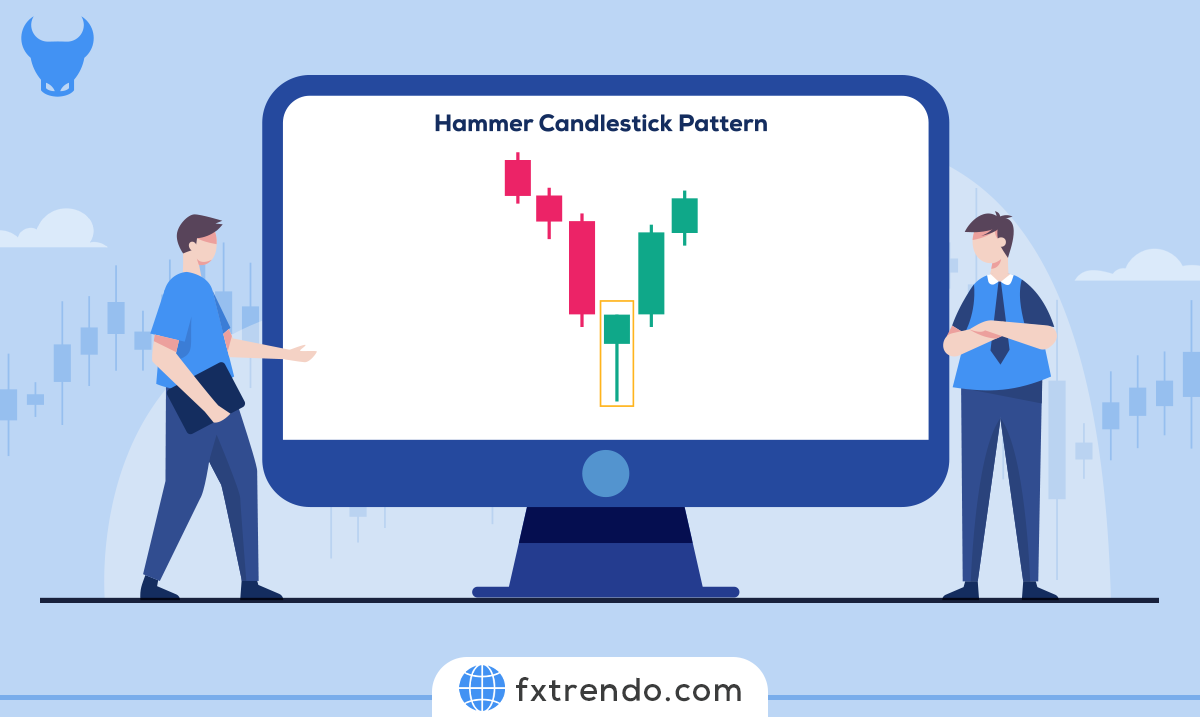What is Forex Copy Trading? The Ultimate Guide about Forex Copy Trading


Copy trading in Forex is one of the attractive investment methods most brokers offer. Copy trading is a feature in which trades are executed by a professional trader simultaneously on other accounts. We will review the copy trading system and its advantages and disadvantages. Stay tuned
Contents
What is Copy trading in Forex?
In the copy trading system, a successful and professional trader makes trades in his account, and the same trades are copied and executed simultaneously in the accounts of people connected to this account. The copy trading system is an opportunity for investors to share in the profits of a professional trader by paying a small fee.
The trader who trades in the copy trading account is called the account manager, and the people whose transactions are copied to the account of the account manager are called investors.
In copy trading accounts, for example, if the account manager opens a buy position in the gold symbol, gold is bought in all investors' accounts simultaneously, and whenever the account manager tries to close the transaction, this transaction is closed immediately in all investor accounts. However, in the copy trading system, investors can control their accounts. For example, an investor can close the trades the manager has made in their account and even open new trades.
Generally, in the copy trading account, investors are in control of their accounts and can change transactions.
Key components of Forex copy trading include:
Selection of Traders: Copiers can choose traders based on performance metrics and trading style that align with their own risk tolerance and investment goals.
Customization: Investors can set parameters such as the percentage of funds to allocate to copy trading and stop-loss limits to manage risk.
Diversification: By copying multiple traders, investors can spread their risk across various trading strategies and currency pairs.
Control: While the trades are copied automatically, investors retain the ability to intervene, pause, or stop copying a trader at any time.
While Forex copy trading carries its share of risks due to the inherent volatility of the Forex market, it also presents a distinctive chance for individuals who may lack the time or know-how for active trading but are still interested in engaging with the Forex market.
Utilizing the expertise and insights of experienced traders, novices too have the potential to gain from the fluctuations in Forex trading.
How Does Forex Copy Trading Work?
Forex copy trading is an intriguing model that serves as a conduit for novice traders to the intricate Forex markets. It’s a mechanism that permits the replication of professional traders’ trades in a live setting, offering the possibility to accrue profits contingent on their trading acumen and market insights.
Here’s a step-by-step breakdown of how Forex copy trading works:
1. Selecting a Copy Trading Platform: The initial step involves choosing a trustworthy Forex copy trading platform. These platforms, generally provided by Forex brokers, offer a space for traders to connect and replicate each other’s trades. Traders and investors can use the Trendo copy trading platform without worry and experience the unique joy of cooperation in trading.
2. Choosing a Trader to Copy: After signing up on a platform, you can peruse the profiles of expert traders. These profiles typically display their trading performance, risk rating, success ratio, and follower count. This data aids in deciding which trader’s strategy is in line with your investment aspirations.
3. Configuring Your Account: Upon selecting a trader to copy, you designate a portion of your capital to mirror their trades. You’re able to set precise parameters, like the sum you’re ready to risk, the share of your balance to be allocated per trade, and any stop-loss commands to curtail possible losses.
4. Automated Copying: As the trader you’re copying makes a trade, an identical trade is concurrently executed in your account. The magnitude of the trade in your account corresponds to the sum you’ve dedicated to copy trading.
5. Observing and Modifying: Although the trades are replicated automatically, you retain authority over your account. You can track the efficacy of the trades you’ve copied and modify your preferences or cease copying a trader if their strategy no longer matches your goals.
6. Risk and Potential Gains: It’s crucial to acknowledge that trading inherently carries risk, and profits are not assured. Nonetheless, by emulating the trades of skilled traders, you have the opportunity to leverage their expertise and make more enlightened trading choices.
Forex copy trading streamlines the trading experience, broadening its reach to an extensive audience. It serves as an ideal platform for novices to gain insights from seasoned experts and for active investors to remain engaged in the market without dedicating extensive time to trend analysis and chart reviews.
Through the utilization of the acumen and proficiency of experienced traders, copy trading emerges as a formidable instrument in the repertoire of your Forex trading strategies.
Read more: Copy trading rules in Trendo
What is a copy trade account?
In addition to offering a PAMM account, Trendo Broker offers its customers another copy trading system type called a copy trading account. In this type of account, investors will be connected to the account of a successful and capable trader with a specific fee, and the trader's transactions will be exactly copied into the investors' account like the PAMM account.
In the copy trade account, investors pay their membership fee to the trader monthly, and the amount of commission received by the account manager is not related to the amount of profit and loss from trading, unlike the PAMM account.
Advantages and Disadvantages of Forex Copy Trading
Forex copy trading has risen to prominence in the financial sphere, presenting a mix of approachability and prospective gains. Nonetheless, akin to any investment approach, it encompasses distinct benefits and drawbacks. Comprehending these aspects can aid traders in making judicious choices and establishing pragmatic anticipations.
Forex copy trading has risen to prominence in the financial sphere, presenting a mix of approachability and prospective gains. Nonetheless, akin to any investment approach, it encompasses distinct benefits and drawbacks. Comprehending these aspects can aid traders in making judicious choices and establishing pragmatic anticipations.
Advantages of Forex Copy Trading
1. Accessibility: Copy trading opens the doors to the Forex market for those who may not have the time or expertise to analyze and execute trades themselves.
2. Learning Opportunity: It serves as a practical learning tool, allowing new traders to observe and learn from the strategies of experienced traders.
3. Diversification: By copying multiple traders with different strategies, investors can diversify their risk across various trading styles and currency pairs.
4. Time-Saving: Since the trades are automatically copied, it saves time that would otherwise be spent on market analysis and trade execution.
5. Risk Management: Many platforms allow copiers to set stop-loss orders and choose the amount they are willing to risk, providing some level of control over potential losses.
Disadvantages of Forex Copy Trading
1. Market Risk: The Forex market is volatile, and even the most skilled traders can incur losses, which would also affect the copiers.
2. Over-Reliance on Others: There’s a risk of becoming too dependent on the signal providers, neglecting to develop one’s own trading skills and understanding.
3. Control Limitations: While you can set certain parameters, you ultimately have less control over individual trade decisions compared to trading on your own.
4. Due Diligence: It requires thorough research to select the right trader to copy, and there’s always the risk of choosing a trader whose strategy doesn’t perform as expected.
5. Costs: Some signal providers and platforms may charge fees or commissions, which can eat into profits.
With this balanced understanding, traders can more effectively steer through the intricacies of the Forex market and make choices that are consistent with their investment objectives and risk appetite.
How to Choose the Best Trading Platform for Forex Copy Trading
Choosing the appropriate trading platform is a pivotal decision in Forex copy trading. The platform acts as your access point to the market and can greatly influence both your trading journey and outcomes.
Here is an exhaustive guide to assist you in selecting the most suitable trading platform for Forex copy trading:
1. User-Friendly Interface
The platform should have an intuitive and user-friendly interface. It should be easy to navigate and set up copy trades, even for beginners. A good platform will allow you to manage your trades and view performance statistics without hassle.
2. Range of Signal Providers
A diverse range of signal providers is essential. The platform should offer access to a wide selection of traders with various trading styles and performance histories. This variety allows you to find signal providers that match your risk tolerance and investment strategy.
3. Research and Analysis
Begin by researching potential trading platforms that offer copy trading services. Look for platforms with a solid regulatory framework to ensure they operate under strict financial standards. Once you’ve shortlisted platforms, delve into the profiles of traders available for copying. Analyze their trading history, strategies, and the markets they specialize in. It’s essential to understand the trader’s approach to the market, whether they focus on long-term trends, day trading, technical analysis, or a combination of methods.
4. Performance Metrics
When analyzing potential traders to copy, consider the following performance metrics:
Historical Performance: Review the trader’s past results over various market conditions. This includes their profit/loss ratio, drawdowns, and overall return on investment.
Risk Score: Platforms often assign a risk score to traders based on their trading behavior. A lower score typically indicates a more conservative approach, while a higher score may imply aggressive strategies.
Trading Style: Identify the trader’s style—whether they are a scalper, a swing trader, or a position trader. Ensure their style aligns with your risk tolerance and investment horizon.
5. Consistency
Consistency is key in trading. A trader who has demonstrated consistent returns over a significant period is often more reliable than one who has achieved high returns in a short span but with high volatility. Consistent performance suggests a well-tested strategy and the ability to manage risks effectively.
6. Reviews and Reputation
Don’t overlook the importance of reviews and the reputation of traders within the copy trading community. Read testimonials and feedback from other copiers. A trader with a strong reputation and positive reviews is likely to be a safer bet than one with mixed or negative feedback.
7. Performance Tracking
The ability to track the performance of signal providers is crucial. The platform should provide detailed statistics about each trader, including historical performance, risk level, and the number of followers. This transparency helps you make informed decisions.
8. Risk Management Tools
Effective risk management tools are a must. The platform should offer features like stop-loss orders and the ability to set limits on how much of your capital is at risk with each signal provider.
9. Regulatory Compliance
Ensure that the platform is regulated by reputable financial authorities. This provides a level of security and ensures that the platform adheres to strict financial standards and practices.
10. Customer Support
Reliable customer support is vital. The platform should offer prompt and helpful support to address any issues or questions you may have.
11. Fees and Costs
Consider the spread and fees associated with using the platform. Some platforms may charge a commission on trades, while others might have subscription fees. Make sure these costs are transparent and reasonable.
12. Social Features
Social trading features can enhance your experience. Look for platforms that allow you to interact with other traders, share insights, and learn from the community.
13. Technology and Execution
The platform’s technology should be robust, ensuring fast and reliable trade execution. Delays in copying trades can lead to different outcomes than the signal provider’s performance.
14. Compatibility and Accessibility
Check if the platform is compatible with your devices and offers mobile trading options. Being able to monitor and adjust your trades on the go is a significant advantage.
By considering these factors, you can narrow down your choices and select a Forex copy trading platform that aligns with your needs and goals. Remember, the best platform for you is one that not only offers a range of features but also aligns with your individual trading style and preferences.
Strategies for Successful Forex Copy Trading
Starting Forex copy trading is an endeavor filled with both anticipation and challenges. To traverse this route with success, it’s critical to implement strategies that bolster your likelihood of success and mitigate potential risks.
Consider these key strategies for a successful Forex copy trading experience:
Start with a Clear Plan
Before diving into copy trading, define your financial goals, risk tolerance, and investment timeline. This plan will guide your decisions and help you stay focused on your objectives.
Choose the Right Traders to Copy
Don’t just look at profits; analyze the trader’s overall performance, including risk management and consistency over time. Ensure their trading style aligns with your investment plan.
Diversify Your Portfolio
Copy multiple traders to spread your risk. Diversification can protect you from significant losses if one trader’s strategy fails to perform as expected.
Use Risk Management Tools
Set stop-loss orders and limit the amount of capital allocated to each trader. These tools can help protect your investment from unexpected market movements.
Monitor Your Account Regularly
Stay informed about the market and the traders you are copying. Regular monitoring allows you to make timely adjustments to your copy trading settings.
Keep Learning
Use copy trading as a learning tool. Analyze the strategies of successful traders and try to understand the rationale behind their trades.
Be Patient
Forex markets can be volatile, and there will be ups and downs. Patience is vital as successful trading strategies often require time to yield results.
Adjust as Necessary
Be prepared to change traders or adjust your strategy if your goals or the market conditions change. Flexibility can be a key to long-term success.
Be prepared to change traders or adjust your strategy if your goals or the market conditions change. Flexibility can be a key to long-term success.
Common Mistakes in Forex Copy Trading
Forex copy trading offers a pathway to the markets for those who may not have the time or expertise to trade on their own. However, even with its ease of access, there are common pitfalls that traders should be aware of to avoid unnecessary losses.
Here are some of the most common mistakes in Forex copy trading:
Not Doing Enough Research
One of the biggest mistakes is failing to conduct thorough research on signal providers. It’s essential to look beyond just profitability and examine factors such as risk management, drawdowns, and consistency over time.
Overlooking Risk Management
Another common error is neglecting proper risk management. Not setting stop-loss orders or allocating too much capital to a single trader can lead to significant losses, especially during volatile market conditions.
Chasing Performance
Some copiers make the mistake of chasing the highest returns without considering the associated risks. High returns often come with high risks, and past performance is not always indicative of future results.
Ignoring Diversification
Failing to diversify is a common oversight. Relying on a single trader or a specific trading style can be risky. Diversification across different traders and strategies can help mitigate risk.
Being Impatient
Impatience can lead to rash decisions, such as switching signal providers frequently based on short-term performance. Successful copy trading often requires a long-term perspective.
Not Reviewing Regularly
Not regularly reviewing and adjusting your copy trading choices can be detrimental. It’s important to stay informed about the traders you are copying and the overall market conditions.
Having Unrealistic Expectations
Entering Forex copy trading with unrealistic expectations of quick and easy profits can lead to disappointment. Understanding that all forms of trading involve risk is crucial.
By being aware of these common mistakes and taking steps to avoid them, you can improve your approach to Forex copy trading. Remember, knowledge, patience, and a well-thought-out strategy are key components of successful trading.


Getting Started with Forex Copy Trading
Forex copy trading can be an excellent way for individuals to engage in the forex market, especially for those who may not have the time or expertise to trade independently.
If you’re considering diving into this investment strategy, here’s a step-by-step guide to getting started with Forex copy trading:
Step 1: Understand the Basics
Before you begin, it’s crucial to have a basic understanding of the forex market and how trading works. Familiarize yourself with currency pairs, market analysis, and the factors that affect currency movements.
Step 2: Choose a Reputable Copy Trading Platform
Research various platforms that offer copy trading services. Look for platforms that are user-friendly, regulated by reputable financial authorities, and have a good track record of reliability and customer service.
Step 3: Set Your Investment Goals
Clearly define your investment goals, risk tolerance, and the amount of capital you’re willing to allocate to copy trading. This will help you make informed decisions about which traders to copy and how to manage your funds.
Step 4: Analyze and Select Traders to Copy
Once you’ve chosen a platform, spend time analyzing the profiles of available traders. Consider their trading history, risk management, success rate, and trading style. Ensure their approach aligns with your investment goals.
Step 5: Start Copying Trades
After selecting the traders you want to copy, decide on the amount of money you will allocate to each trader and set any risk management parameters, such as stop-loss orders. Then, you can start copying trades automatically.
Step 6: Monitor and Adjust Your Strategy
Regularly monitor the performance of the traders you are copying and the overall market conditions. Be prepared to make adjustments to your copy trading settings if necessary.
Step 7: Learn and Adapt
Use the experience to learn more about forex trading. Analyze the strategies used by successful traders and adapt your approach as you gain more insight.
Step 8: Manage Your Expectations
Keep your expectations realistic. Forex copy trading can be profitable, but it also comes with risks. Understand that not all trades will be successful and that market conditions can change rapidly.
By following these steps, you can start your Forex copy trading journey with a solid foundation and a greater chance of success.
The Future of Forex Copy Trading
Looking ahead at the trajectory of financial trading, Forex copy trading emerges as a swiftly progressing trend with the capacity to transform the currency trading domain.
The future of Forex copy trading is being molded by a confluence of factors:
Technological Advancements
The incorporation of artificial intelligence and machine learning into trading platforms is anticipated to boost the efficiency and effectiveness of copy trading. These technologies can assist in evaluating trader performance, forecasting market trends, and automating intricate trading strategies.
Heightened Regulation
With the rising popularity of copy trading, we can anticipate increased oversight from financial regulators. This could result in stricter standards for platforms and signal providers, ensuring enhanced transparency and safeguarding for investors.
Expanded Accessibility
Technological progress will persist in reducing entry barriers, rendering Forex copy trading accessible to a broader audience. This democratization of trading implies that more individuals globally will have the chance to engage in the Forex market.
Improved Risk Management
Future platforms are likely to introduce more advanced risk management tools, enabling copiers to exert finer control over their exposure to market volatility and the actions of the traders they copy.
Social Trading Networks
The growth of social trading networks is projected to persist, with platforms becoming more interactive. Traders will have the opportunity to exchange insights, strategies, and collaborate in ways that were previously unattainable.
Asset Diversification
While Forex copy trading is presently concentrated on currency pairs, the future might witness an expansion into other asset classes, such as commodities, stocks, and cryptocurrencies, offering copiers a more diversified portfolio.
Customized Copy Trading
We might witness the emergence of customized copy trading experiences, where platforms employ algorithms to pair copiers with signal providers based on compatibility in trading styles, objectives, and risk profiles.
Ethical Trading Practices
There will be an escalating focus on ethical trading practices, with platforms and traders being held to higher standards concerning their environmental, social, and governance (ESG) impact.
The Forex trading industry continues to evolve, it will be important for traders to stay informed and adaptable to the changes that lie ahead.
Summary
In this article, we fully introduced the copy trading system in the forex market and reviewed its advantages and disadvantages. Copy trading is a win-win system because professional traders attract capital on this platform, and investors can earn good profits. The only requirement is that investors choose professional traders on a safe and fast platform. Finally, we recommend you see the necessary training before participating in the copy trading system and choose a professional account manager.
Frequently Asked Questions about Copy Trading
Is copy trading legal?
Is copy trading legal in the U.S.?
Is copy trading risky?
Can you make money from copy trading?
Is copy trading good for beginners?
Related Post
most visited




















